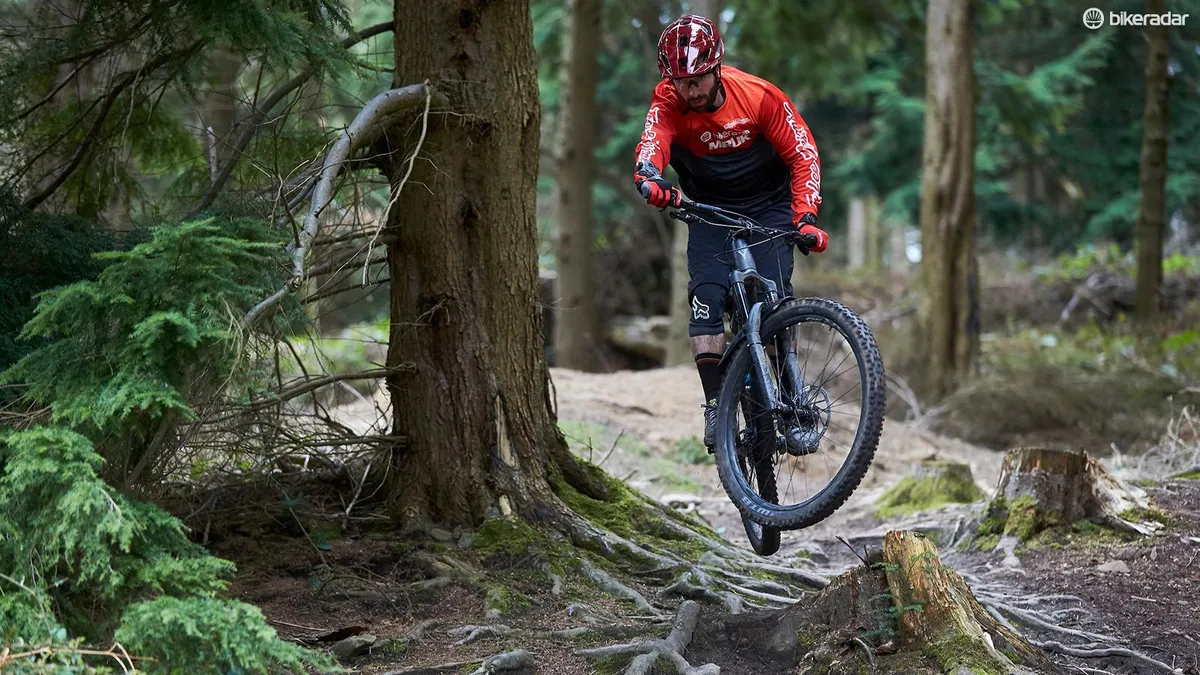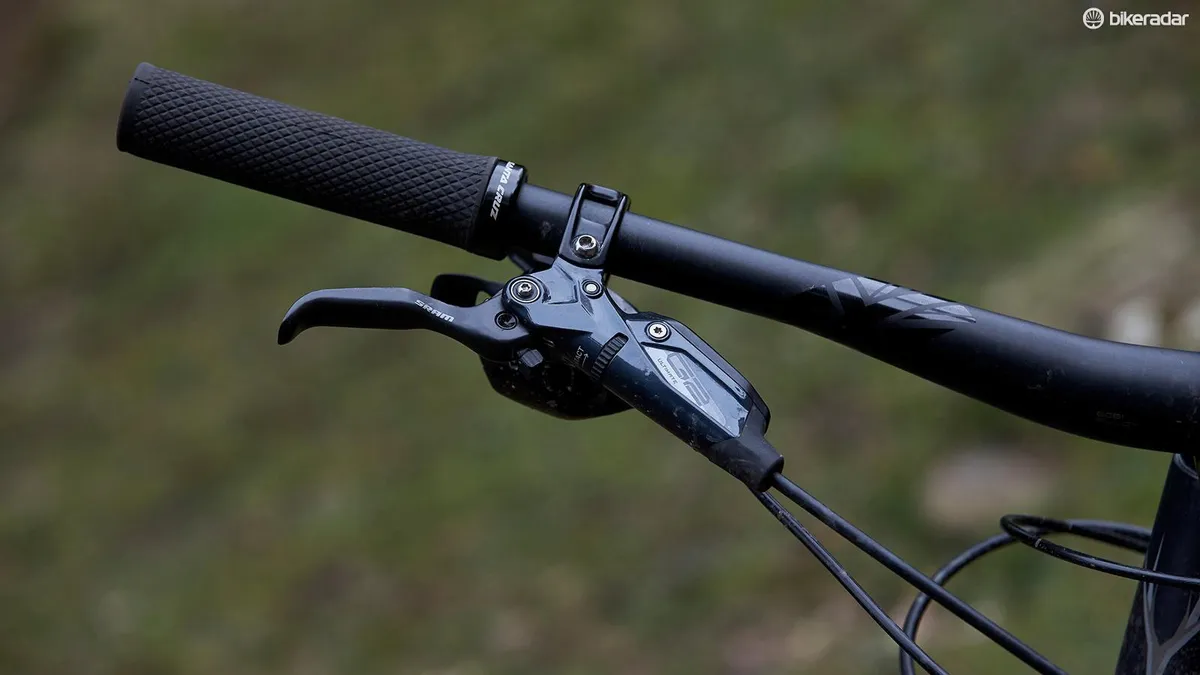It was back in 2014 when SRAM launched its Guide brake, which has since gone on to win its fair share of awards and lay to rest a number of consistency issues that seemed to plague the Avid Elixir Trails — the brake the Guide was designed to replace.
In a bid to boost the Guide’s performance further and potentially bring it closer to its superb, heavy hitting Code brake, SRAM has gone back to the drawing board and the final result, as seen here, is the all new G2 brake.
- The complete guide to bicycle gears — bicycle transmissions explained
- The ultimate guide to bike geometry and handling
SRAM claims its latest brake to be “evolutionary not revolutionary”, though, and on the trail, while things still feel familiar, there’s certainly a boost in performance. But more on that later.
Initially SRAM will be offering this new brake in two higher-end options: the Ultimate and slightly cheaper RSC.
The big news here is the claimed 7 percent increase in power over the Guide brake. While the lever looks more like a pared down version of the Code, internally things have been refined somewhat (think better seals etc.). It’s more or less the same with the G2 continuing to use the SwingLink cam and the same leverage rate as the Guide and Code — the caliper is totally new though.

Although the pads still sit away from the caliper to help deal with heat build up (and it’s open enough to allow for easy access when it comes to swapping them), SRAM has made the pad pocket narrower and the connection between the two halves of the caliper has been beefed up in a bid to reduce flex and improve power transfer.
The US brand has also ditched the heat shield used on the previous S4 caliper, claiming that by using phenolic pistons (made from composite plastic that’s incredibly strong and heat resistant) on all G2 models there’s simply no longer a need for it and that the G2 and Guide are evenly matched when it comes to dealing with heat build-up.
SRAM's new Power Organic pad compound is designed to produce a “more aggressive bite” and increased power under sustained braking
It also claims to have made the bite point more consistent by improving the seal/piston/caliper interface. As the pads wear, the pad gap remains the same, which in turn means things should remain totally consistent at the lever, in theory at least.
The hose connection with the caliper remains the same, as does the easy to use Bleeding Edge bleed system and the pad shape — don’t worry if you’ve a stack of spare Guide pads because they’ll fit the new G2.
That said, SRAM contributes some of the boost in power and performance to its new Power Organic pad compound which is designed to produce a “more aggressive bite” and increased power under sustained braking.
The G2’s continue to use DOT 5.1 brake fluid and the fluid volume remains the same in the G2 as it is in the Guide. Finally, the G2 has also been treated to a new hydraulic hose which SRAM claims is less prone to holding shape, making installation that bit less fiddly.
SRAM G2 Ultimate brakes ride impressions

I paired my G2s with SRAM’s heavier 200mm Centreline rotors (the total weight of the brake, mount and rotor is 476g) and spent close to three months tackling brake dragging descents in a wide variety of conditions to see how they held up.
Like the Guides and Codes, the G2’s use the MatchMaker X bar clamp for easy integration if you’re using a SRAM shifter, and the levers can be flipped from side to side without needing to be bled, making set up nice and easy.
Getting the G2s bedded in takes nothing more than some water on the rotors and a few hard squeezes while lapping the carpark. Both the Ultimate and cheaper RSC G2s have tool-free reach and bite point adjustment to help get things feeling just right at the bar. The adjustments both make a difference too and make set-up that bit easier.
In terms of feel, the G2’s actuation is light and easy on the finger. Clamp those pads to the rotor though and the initial bite is surprisingly potent and just as promised, far more akin to the downhill orientated Code brake than the original Guide.
While it can’t quite match the Code in terms of punch when tackling prolonged descents, it’s really not that far off in terms of feel. Thankfully the power is easy to control too.
There’s a decent amount of modulation which allows you to easily manage your speed consistently, even on tight, slippery, steep tech terrain where gauging your braking can be really tricky.

In terms of consistency, while I’ve not had the chance to throw myself down any alpine descents just yet, the rough, brake dragging descents I have tackled haven’t caused any issues with wandering bite points or pumping up.
Lever feel has remained consistent throughout. Even in the pouring rain I was impressed with the power on offer, and in terms of pad wear.
Despite nearly all of my rides being on sodden trails with plenty of mud and grit thrown into the mix, I was still left with quite a bit of the Power Organic pads remaining. After one really wet day on some particularly steep trails I have had to make a small adjustment to the reach on the rear brake, but that’s about it. There’s still plenty of life in them yet.
Overall, the G2 Ultimates offer seriously impressive performance but they don’t come cheap. While they’re an impressive weight, I’d likely opt for the cheaper G2 RSC version which forgoes the carbon lever and lever pivot bearing — it gets a bushing instead.
It is a touch heavier (around 13g) but costs £95 less. If you’ve deep pockets though, the feel and control on offer from the Ultimate is well worth considering.
SRAM G2 Ultimate brakes specifications and price
- Brake fluid: DOT 5.1 brake fluid
- Brake: £265 (Brake) /
- Brake with 200 Centreline rotor: £295
